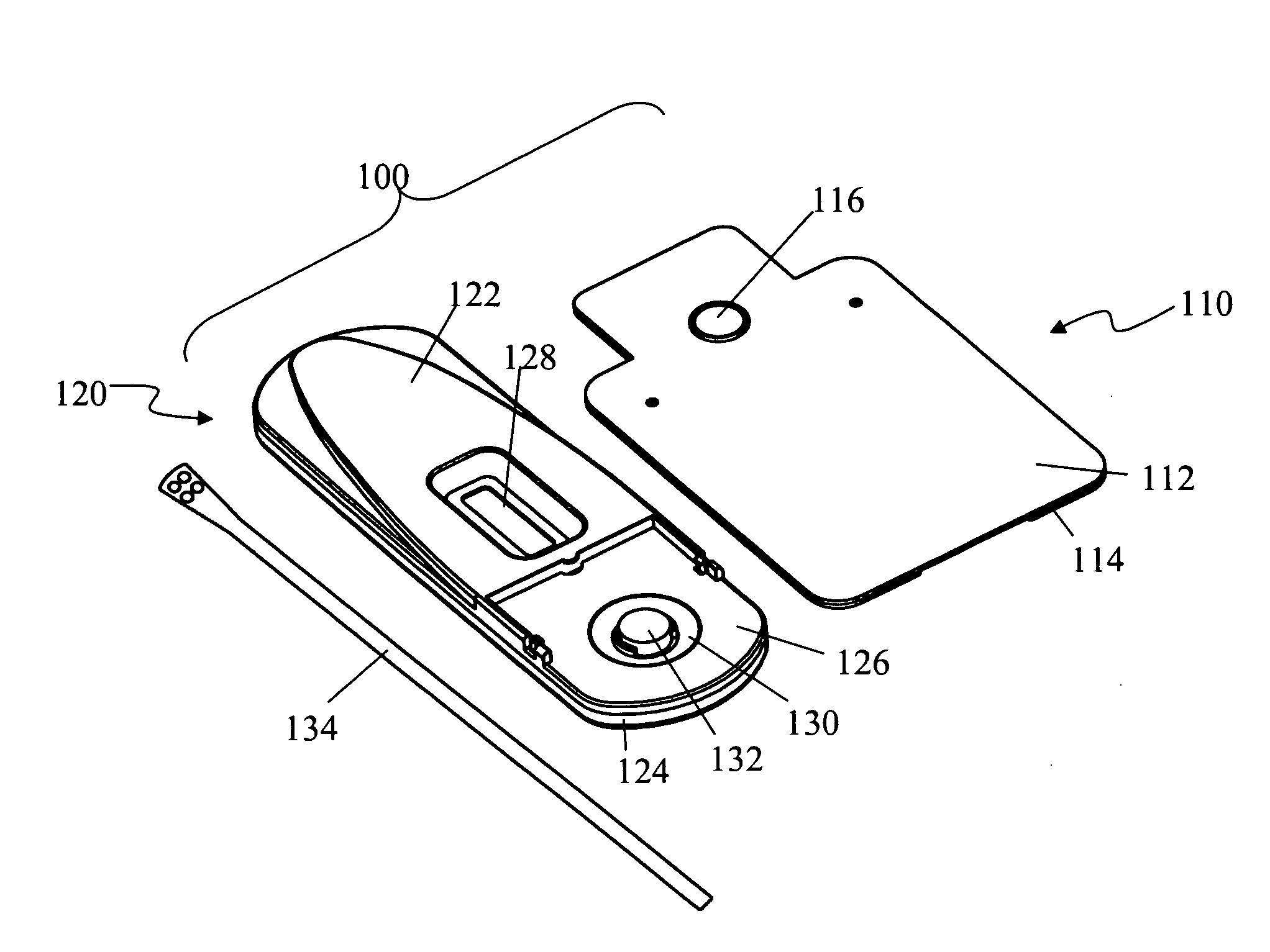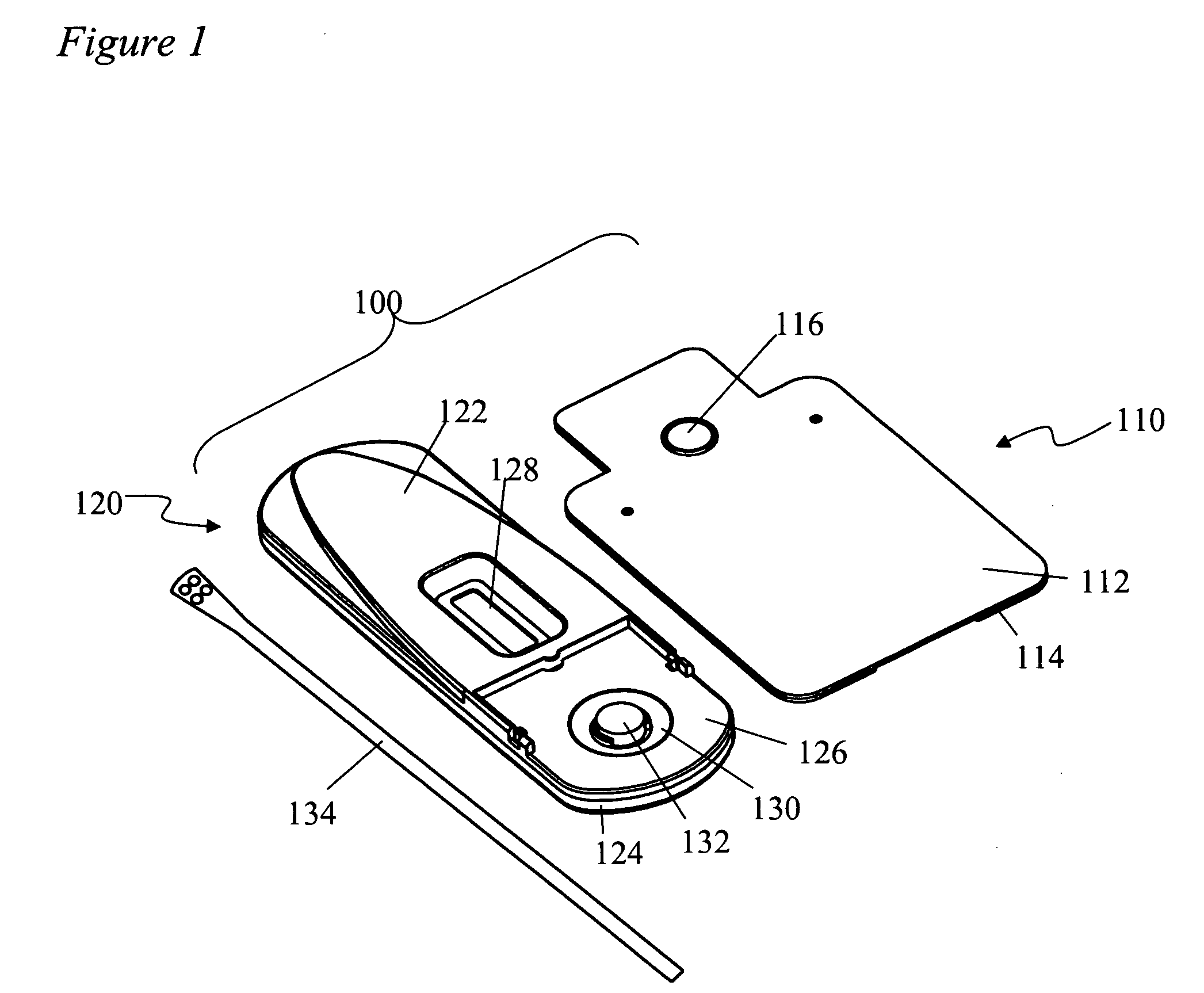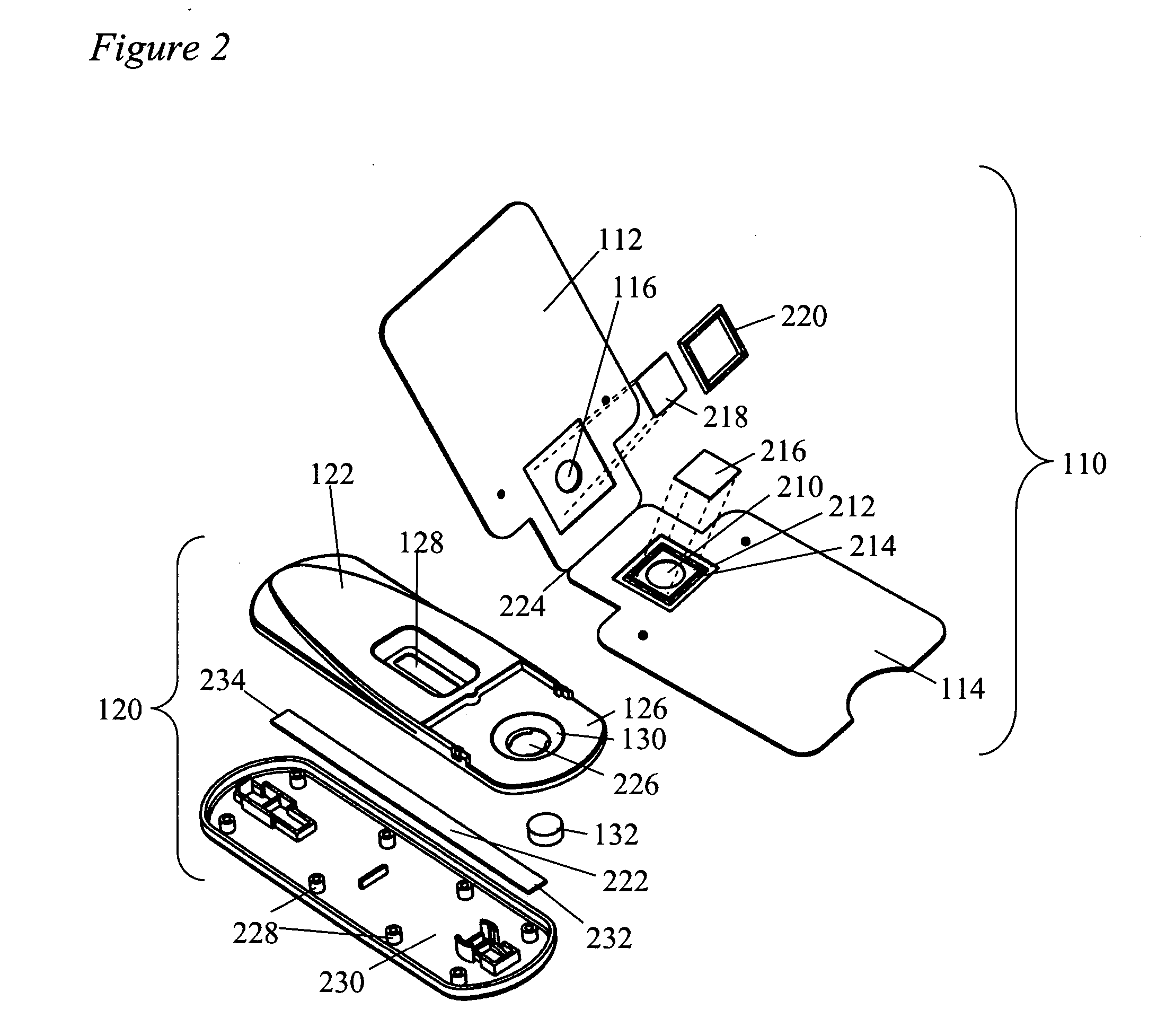Devices and methods for sample collection and analysis
a sample collection and analysis technology, applied in the field of sample collection and analysis devices, can solve the problems of large number of false-positive tests, unpleasantness of sample collection and analysis, and the available devices fail to adequately solve these problems, so as to prevent degradation of the tertiary structure of compounds, reduce surface tension, and prevent decomposition
- Summary
- Abstract
- Description
- Claims
- Application Information
AI Technical Summary
Benefits of technology
Problems solved by technology
Method used
Image
Examples
example 1
Effect of Treatment of Transfer Bead With Surfactant on Buffer Flow Rate
[0068] This example illustrates the benefit of treating the absorbent transfer material with surfactant (Triton® X-100 (synonyms: octyl phenol ethoxylate, polyoxyethylene, Octyl phenyl ether) in manufacturing the assay device.
[0069] Absorbent transfer material in the form of beads was treated with solutions of Tris-casein-PVP buffer containing 0, 1, 2, 3, 4 or 5% Triton® X-100. The saturated transfer beads were then thoroughly dried at 55° C., followed by insertion of each bead into the bead orifice of an assembled test device containing a test strip. Unfilled collection slides having sample pads treated with 0.06 ug Triton® X-100 were engaged with the test devices and 200-240 μl of buffer was applied to each buffer orifice. The time for the control line to appear in the results window was measured. In all cases, the buffer passed through the empty collection slide in 5 seconds. When the transfer bead containe...
example 2
Effect of Collection Slide Cover Pad Surfactant Concentration on Buffer Flow Rate
[0070] This example illustrates the benefit of treating the collection slide cover pad with surfactant to obtain a faster flow rate of the buffer.
[0071] All test devices contained transfer beads treated with 1.2 μg of Triton® X-100. The sample collection pads of the collection slides were untreated. The cover pads were treated with 20 μl of 0, 0.31, 0.63, 1.25, 2.5 or 5% Triton® X-100. The empty collection slides were engaged in the test devices and 200 μl of buffer was added to each buffer orifice, to trigger the lateral flow. Buffer was unable to flow into the collection slide when the cover pad was not treated with a surfactant (0% Triton® X-100). As Triton® X-100 concentration increased, the flow rate also increased. When the cover pad was treated with 0.31% Triton® X-100, the control line appeared at 20 seconds. At Triton® X-100 concentrations of 0.63%, 1.25%, 2.5% and 5%, the control line appear...
experiment 3
Influence of Sample Cover Pad and Transfer Bead on Test Sensitivity
[0072] This example illustrates the ability of the cover pad and sample collection pad to allow the passage of hemoglobin, and therefore not interfere with assay sensitivity.
[0073] Solutions containing 0, 50, 100 and 200 ng hHb / ml were prepared. Collection slides having cover pads treated with 20 μl of 0.53% Triton® X-100 were engaged in the docking area of assay devices of the invention having transfer beads treated with 1.2 μg Triton® X-100. 200 μl of the hHb solutions was applied to the buffer orifices of the collection slides, followed by measurement of the test line intensity at 5 minutes of incubation time. As a control, 140 μl of the hHb solution was applied directly to test strips housed in test devices having no transfer beads. The intensity of the test lines of the control tests was also measured at 5 minutes.
[0074] The test samples and the control samples were found to produce the same results. At a con...
PUM
 Login to View More
Login to View More Abstract
Description
Claims
Application Information
 Login to View More
Login to View More - R&D
- Intellectual Property
- Life Sciences
- Materials
- Tech Scout
- Unparalleled Data Quality
- Higher Quality Content
- 60% Fewer Hallucinations
Browse by: Latest US Patents, China's latest patents, Technical Efficacy Thesaurus, Application Domain, Technology Topic, Popular Technical Reports.
© 2025 PatSnap. All rights reserved.Legal|Privacy policy|Modern Slavery Act Transparency Statement|Sitemap|About US| Contact US: help@patsnap.com



